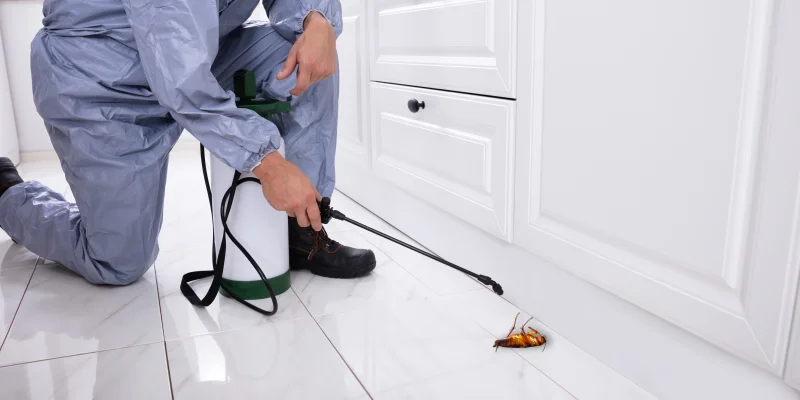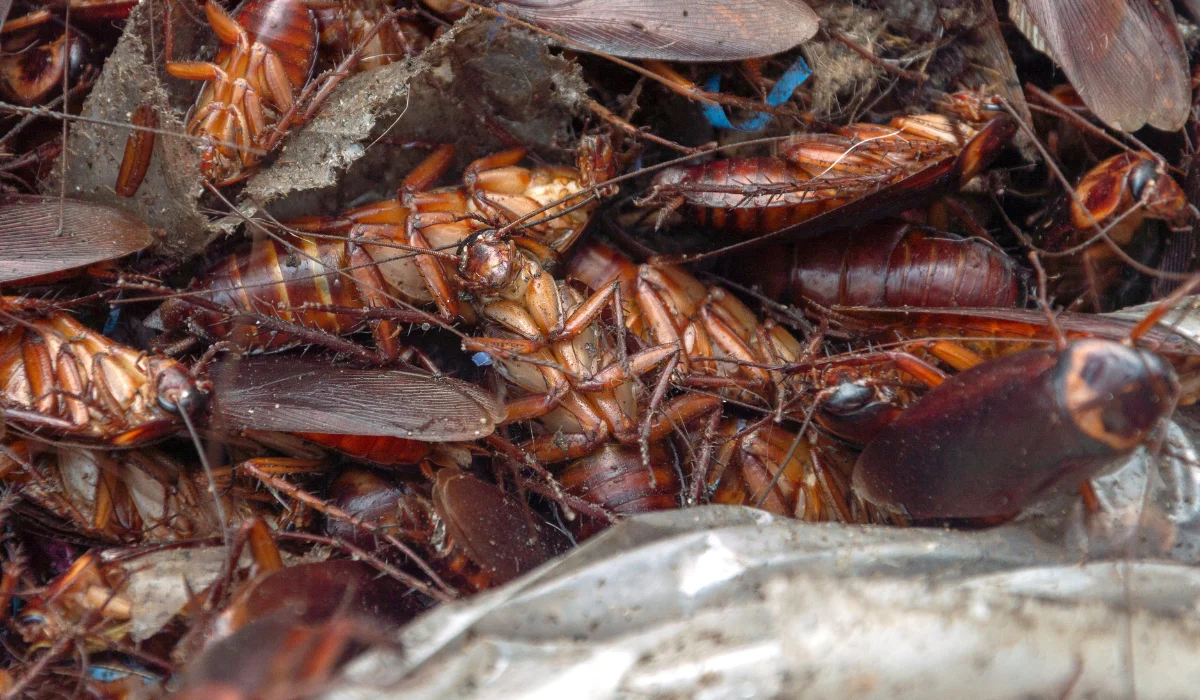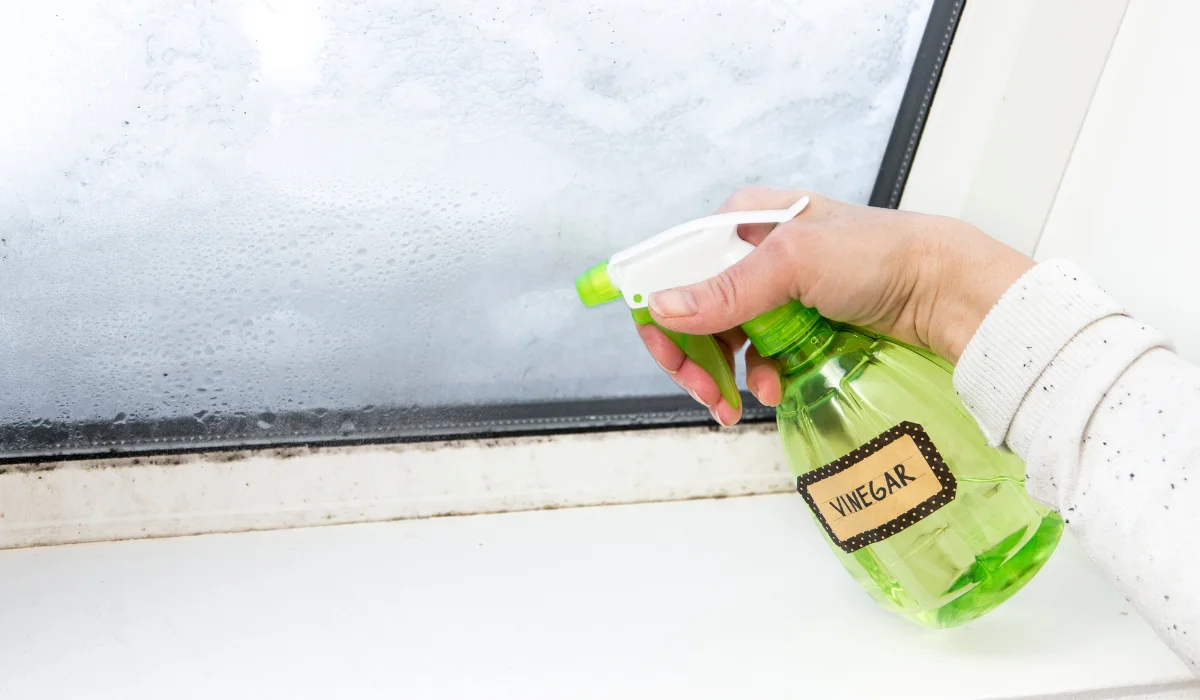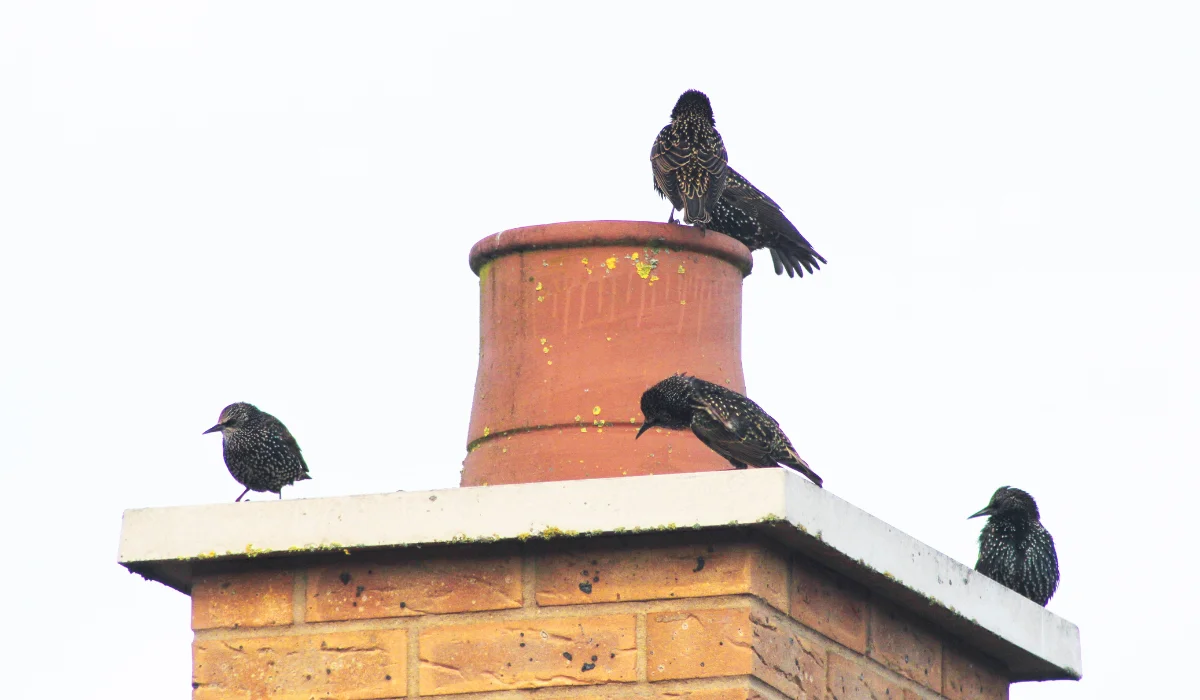Cockroach infestations in homes are a common and unsettling issue that homeowners face. These pests not only bring a sense of discomfort but also pose health risks due to the pathogens they carry.
If you have a persistent cockroach problem or a new infestation, you can explore several do-it-yourself cockroach control methods while you wait for a professional to come help.
Key Takeaways
- Baking soda and sugar bait, diatomaceous earth, roach traps, and adhesive traps are just a few DIY cockroach control methods.
- Preventative maintenance such as sealing entry points and cleaning up any food messes are key strategies to avoid a roach infestation.
- Calling a pest control professional is the best way to completely eradicate cockroaches in your home.
DIY COCKROACH CONTROL
Battling a roach problem can seem daunting, but knowing how to get rid of cockroaches with the right home remedies can diminish these unwelcome guests.
Combining natural ingredients and commercial products can offer a comprehensive defense against roaches.
Here’s how you can leverage a natural remedy for your cockroach problem:
Baking Soda and Sugar Bait
A simple baking soda and sugar mixture can act as an effective cockroach bait. The sugar attracts the roaches, while the baking soda, when ingested, reacts with the acid in their stomachs, producing gas that kills them.
How To Use:
Mix equal parts of both for best results and sprinkle the mixture near infestation sites.
Diatomaceous Earth (DE)
This naturally occurring, fine powder is lethal to cockroaches upon contact.
Made from the fossilized remains of tiny aquatic organisms known as diatoms, DE works by absorbing the oils and fats from the roach’s exoskeleton, causing them to dehydrate and die.
How To Use:
To kill roaches, spread a thin layer in areas where they are known to frequent, such as under appliances and along baseboards.
Boric Acid and Sugar Paste
This concoction is a potent homemade roach killer. The sugar lures the roaches, while the boric acid, toxic to them, is ingested and proves fatal.
How To Use:
Mix boric acid (borax) with sugar and water to create a paste. Apply this paste near roach pathways, but keep it away from pets and children.
Gel Baits
Roaches are attracted to the bait, consume it, and typically die back in their nest, potentially killing others.
How To Use:
Strategically apply in small dabs under appliances, drawers, and cracks and crevices where roaches hide.
Roach Bait Stations
These contained units offer a mess-free way to distribute poison. Roaches enter the station, consume the bait, and return to their nest, where they die and are cannibalized by other roaches, spreading the poison.
How To Use:
Place the stations in targeted areas and replace them according to the package instructions or once the bait is depleted.
Adhesive Traps
While not a solution for eliminating an infestation, adhesive traps can help monitor roach activity and identify high-traffic areas. These roach traps use a sticky surface to catch roaches, making them easier to dispose of.
How To Use:
Remove the protective film to expose the sticky surface, place the trap strategically, and check periodically.
Insecticidal Sprays
Select pesticides, such as insect growth regulators (IGR), are labeled specifically for cockroach control. This repellent can treat infested areas directly or as a perimeter defense around your home.
How To Use:
Always follow the insecticide manufacturer’s instructions to ensure safety and effectiveness.
HOW TO PREVENT A COCKROACH INFESTATION
Creating an environment that’s uninviting to cockroaches is essential for preventing infestations.
These pests seek food, water, and shelter, so targeting these needs can significantly reduce the likelihood of cockroaches making your home theirs.
Maintain Cleanliness and Hygiene
A cornerstone of cockroach prevention is cleanliness. Cockroaches are attracted to food remnants and spills, making thorough cleaning practices critical.
Daily Habits Checklist
- Wash dirty dishes promptly to prevent cockroaches from reaching countertops.
- Wipe counters and surfaces to eliminate food sources.
- Sweep and vacuum floors regularly to remove crumbs and debris.
- Clean spills immediately to avoid attracting pests.
- Dispose of trash daily in sealed garbage cans.
- Store human and pet food in airtight containers inside kitchen cabinets.
Seal Entry Points
Cockroaches can squeeze through surprisingly small gaps. Securing your home’s perimeter by sealing entry points is a proactive measure to keep them out.
Sealing Checklist
- Inspect and apply caulk to cracks and crevices in walls, near baseboards, and around utility lines.
- Install weather stripping on doors and windows to close gaps.
- Seal gaps around pipes and utilities that enter your home.
- Spray essential oils mixed with water to create an effective barrier at entry points.
Make Your Home Less Inviting
Cockroaches avoid bright, dry, and clean areas. Adjusting your home environment to make it less appealing to cockroaches can deter them from settling in.
- Illuminate dark spaces with bright lighting to discourage roach activity.
- Repair leaks promptly to eliminate water sources.
- Use dehumidifiers in damp areas to reduce moisture.
- Place bay leaves or citrus peels to deter roaches with off-putting scents.
- Declutter your home to remove potential hiding places and nesting areas.
HEALTH RISKS AND SAFE PRACTICES FOR ROACH CONTROL
When dealing with cockroach control, it’s crucial to comprehend the health implications and prioritize the safe handling of pest control methods.
Neglecting can lead to unwanted exposure to toxic substances or escalate the spread of cockroach-related diseases.
Understanding the Health Risks
Cockroaches are notorious for their disease-carrying capability. Their ability to thrive in unsanitary conditions means they can pick up and spread harmful pathogens throughout our environments.
Here are the primary health risks associated with cockroach infestations:
| Risk Category | Description |
| Bacteria Transmission | Cockroaches can carry E. coli and Salmonella on their bodies, contaminating food and surfaces. |
| Allergen Spread | Droppings, saliva, and shed skin can trigger allergies and asthma, especially in children. |
| Disease Vector | Capable of spreading diseases like gastroenteritis and dysentery through pathogens and parasites. |
Ensuring Safety with Control Methods
Safe and effective methods can significantly reduce the risks associated with chemical treatments. Here are key strategies for safe pest management:
| Practice | Description |
| Non-toxic Options | Use traps, baits, and diatomaceous earth to control infestations without harmful chemicals. |
| Proper Application | Follow manufacturer instructions for safe and effective use of pest control products. |
| Ventilation | Ensure areas are well-ventilated when using aerosols or sprays to mitigate inhalation risks. |
HOW TO IDENTIFY A COCKROACH INFESTATION
Before starting any DIY cockroach control to kill cockroaches, you must identify the species you’re dealing with, as different types have varying behaviors and preferences.
Common Species of Cockroach
Comparing size, color, and habitat preferences can guide you in identifying the cockroach species. You will find the three most common roaches in Louisiana below.
| Species | Size | Color | Habitat |
| German Cockroach | Typically measures about 0.5 inches. | Light brown with two dark stripes on its back. | Warm and humid environments often found in kitchens and bathrooms. |
| American Cockroach | Can be quite large, averaging around 1.5 inches. | Reddish-brown with a yellowish figure 8 pattern on the back of their heads. | Basements and sewers, they venture into homes to find food and water. |
| Oriental Cockroach | Usually around 1 inch. | Dark brown to almost black. | Cooler, damp areas, such as under sinks or in drains. |
Aside from these roach species, other types you may encounter in your Louisiana homes are:
- Australian cockroaches: Distinguishable by a yellow band around the edge of the top of their head.
- Brown-banded cockroaches: Have a light brown circle on the top of their heads.
- Louisiana woods cockroaches: Generally more round than other species.
- Smokey brown cockroaches: Known for their shiny exoskeleton.
- Asian cockroaches: Have two dark bands on the head shield.
SIGNS OF A COCKROACH INFESTATION
Identifying an infestation early is crucial for effective control and elimination. Here are the signs to look out for:
Droppings
- German Cockroach: These pests leave behind small, pepper-like specks, especially where food is stored, such as kitchen drawers or countertops.
- American Cockroach: Their droppings are larger, with blunt ends and ridges, resembling those of a mouse but smaller. These are typically found in basements, pantries, and behind appliances.
- Oriental Cockroach: Droppings are dark, capsule-shaped, and can be mistaken for mouse droppings, which makes accurate identification vital.
Musty Odor
Cockroaches emit a distinctive, musty odor that becomes more pronounced as the infestation grows. This smell is due to the release of pheromones by cockroaches and can be a strong indicator of their presence.
Shed Skins
As cockroaches grow, they molt several times before reaching maturity. Finding shed skins in areas like basements, laundry rooms, or kitchens can indicate an active or growing infestation.
Egg Casings
Cockroach egg casings, known as oothecae, are oblong and can contain numerous eggs. These casings are often found in hidden areas, such as cracks and crevices, behind furniture, or under refrigerators.
Sightings of Live or Dead Cockroaches
Seeing live cockroaches during the day can indicate a large infestation, as these pests are typically nocturnal. Dead cockroaches are also a sign that there are more hidden away.
Damage to Food and Packaging
Cockroaches are omnivorous and eat almost anything, including paper, glue, and food items. Signs of nibbled food packages, damaged books, or stained fabrics can also indicate their presence.
–
Get $15 Off Your Cockroach Service Today!
–
WHEN TO CALL A PROFESSIONAL PEST CONTROL COMPANY?
When DIY methods fall short in tackling your pest problem, it might be time to call in the exterminator.
Professional pest control companies offer customized solutions that are both effective and safe, ensuring your infestation worries are thoroughly addressed. They bring expertise and specialized treatments to the table, precisely targeting the root of the problem.
For severe infestations, enlisting pest control professionals can be the key to reclaiming your peace of mind and securing a pest-free environment.
 By: LaJaunie's Pest Control
By: LaJaunie's Pest Control 



